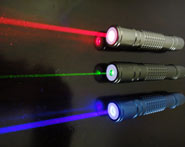


 الفيزياء الكلاسيكية
الفيزياء الكلاسيكية
 الكهربائية والمغناطيسية
الكهربائية والمغناطيسية
 علم البصريات
علم البصريات
 الفيزياء الحديثة
الفيزياء الحديثة
 النظرية النسبية
النظرية النسبية
 الفيزياء النووية
الفيزياء النووية
 فيزياء الحالة الصلبة
فيزياء الحالة الصلبة
 الليزر
الليزر
 علم الفلك
علم الفلك
 المجموعة الشمسية
المجموعة الشمسية
 الطاقة البديلة
الطاقة البديلة
 الفيزياء والعلوم الأخرى
الفيزياء والعلوم الأخرى
 مواضيع عامة في الفيزياء
مواضيع عامة في الفيزياء|
Read More
Date: 23-4-2021
Date: 13-4-2021
Date: 24-4-2021
|
Biasing for current amplification
Because a small change in the base current, IB, results in a large collector-current (IC) variation when the bias is just right, a transistor can operate as a current amplifier. It might be more technically accurate to say that it is a “current-fluctuation amplifier,” because it’s the magnification of current variations, not the absolute current, that’s important.
You’ll see that there are some bias values at which a transistor won’t give current amplification. If the E-B junction is not conducting, or if the transistor is in saturation, the curve is horizontal. A small change (to the left and right) of the base voltage, EB, in these portions of the curve, will cause little or no up-and-down variation of IC.
But if the transistor is biased near the middle of the straight-line part of the curve, the transistor will work as a current amplifier.



|
|
|
|
حقن الذهب في العين.. تقنية جديدة للحفاظ على البصر ؟!
|
|
|
|
|
|
|
"عراب الذكاء الاصطناعي" يثير القلق برؤيته حول سيطرة التكنولوجيا على البشرية ؟
|
|
|
|
|
|
|
جمعية العميد تعقد اجتماعها الأسبوعي لمناقشة مشاريعها البحثية والعلمية المستقبلية
|
|
|